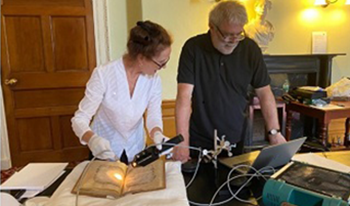
Acquired in 2019 by a consortium of philanthropic and cultural heritage organizations, the Johnson Publishing Company (JPC) Archive is co-owned by the Getty Research Institute (GRI) and Smithsonian National Museum of African American History and Culture (NMAAHC). Dating from 1942, when John H. and Eunice W. Johnson founded the company, to the 21st century, the JPC Archive contains over 4 million photographs of published and unpublished works documenting the Black experience, some of which were featured in JPC’s 14 magazines, most notably JET and Ebony. In addition to the historically significant events and behind-the-scenes moments depicted, the Archive presents an unmatched and unique record of many facets of the life, work, and contributions of Black individuals, communities, groups, organizations, and businesses. Working collaboratively across the United States (from Los Angeles to Chicago to Washington, DC), these two large cultural heritage institutions currently co-steward this collection, with each focusing on their strengths to bring this remarkable and unique collection to the public.

Often the perspective of heritage science can seem opaque, with the perception of science being only for “scientists”. The fairly recent move to using the term “heritage science” is better known in Europe, but there is some confusion as to what this term encompasses. Heritage science refers to any of the multidisciplinary fields that contribute to the discovery, security, and preservation of a diverse range of cultural heritage materials. Many heritage collection items are complex multi-composites with convoluted preservation needs and degradation pathways. One of the areas that seems to be less well understood and appreciated is the capacity for heritage science to add new layers of knowledge to collection items, as well as the capacity for re-interpretation through this new information. Further areas of heritage science that support humanities include confirming provenance, the ability to link and reconnect separated collections, and the utilization of new technology to provide levels of security, an area of support greatly needed in the current environment for extensive trafficking of heritage.